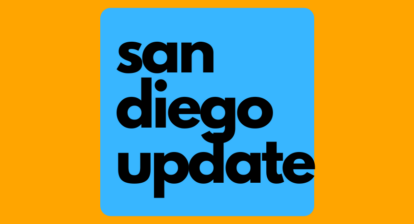Legislative leaders would like us to think that the budget agreement for 2025-26, reached with Gov. Gavin Newsom this week, is a remarkable — even commendable — response to financial challenges spurred by factors outside their control, notably President Donald Trump’s tariffs.
A summary of the $321 billion agreement released by the state Senate states, “Thanks to the efforts of the Legislature and the governor over the past two years, the budget has been stabilized once again, with the governor’s proposed budget on January 10 being balanced without requiring new solutions. Unfortunately, since January, the situation has changed, and California is now confronted with a notable budget shortfall.”
“First and foremost,” the summary adds, “the policies of the new federal administration — particularly the tariff increases — have significantly downgraded economic forecasts worldwide.”
It continues by noting that “to a modest extent, the baseline costs of key programs — especially Medi-Cal — have escalated more rapidly than anticipated … and to a lesser extent, the devastating fires in LA have negatively impacted the economy and led to increased state expenditures.”
This scenario is a fabrication, devised to obscure the reality that Newsom and legislators have been overspending revenues for three years, since the governor incorrectly announced an almost $100 billion surplus — long before fires affected Los Angeles and Trump took office.
The alleged surplus triggered a multi-billion-dollar wave of new spending in 2022, which has continued. The administration eventually acknowledged, a year ago, an overstatement of projected revenues by $165 billion over four years.
The initial 2025-26 budget proposed by Newsom in January revealed an $11 billion gap between general fund revenues and expenditures. His revised budget, released in May, showed a $19 billion deficit even after implementing numerous spending cuts, primarily in services for the poor and elderly. The budget deal further increases the deficit to $21 billion.
Newsom’s revised budget set off the blame-it-on-Trump trend, which legislative leaders quickly adopted to excuse their ongoing failure to either cut spending or raise taxes to balance income and expenditures, a condition referred to in the Capitol as a “structural deficit.”
Consequently, all versions of the budget, including the semi-final one revealed this week, aim to bridge the gaps for another year through payment deferrals, loans, accounting tricks, and draws on reserves intended for real emergencies.
Both direct and indirect loans to the general fund budget come from special funds earmarked for specific purposes, and after three years of deficit spending, the state has amassed billions in internal debt that will eventually need repayment.
The accounting tricks take various forms, including delaying $2.3 billion in support payments to community colleges and local school districts that are due in June 2026 until the following month, thereby shifting them from one fiscal year to the next.
Officials call such tactics “solutions,” but they do not resolve any issues. They merely postpone the inevitable day of reckoning when the administration exhausts its options. That day will likely arrive once Newsom has left the governorship and possibly enters the presidential race.
Essentially, the state has adopted a similar “hide-the-pea” approach to budgeting that the federal government employs, leading to a multi-trillion-dollar national debt. Interestingly, Trump appears to continue this spend-now-pay-later mentality with his proposed “big beautiful bill,” which is expected to increase the national debt even further.
If a private corporation manipulated its financial records as the state government does, its executives could face imprisonment for fraud. Yet, for some inexplicable reason, California voters seem to tolerate the ongoing fiscal malpractice in the Capitol.
Dan Walters is a CalMatters columnist.





